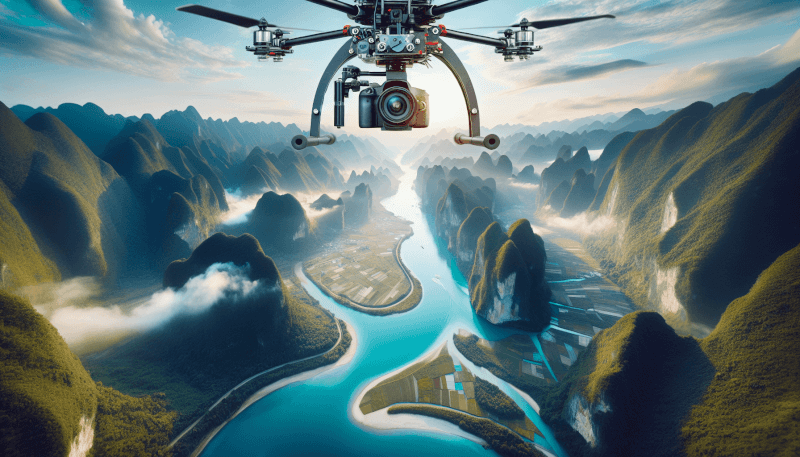When it comes to capturing breathtaking aerial photographs with your RC helicopter, having the right camera is essential. With so many options available, it can be overwhelming to choose the best one for your needs. That’s where we come in. In this article, we’ll explore a selection of top camera options that are perfect for RC heli aerial photography. Whether you’re a beginner or a seasoned pro, we’ve got you covered. So, get ready to elevate your photography game and discover the perfect camera for your next aerial adventure.
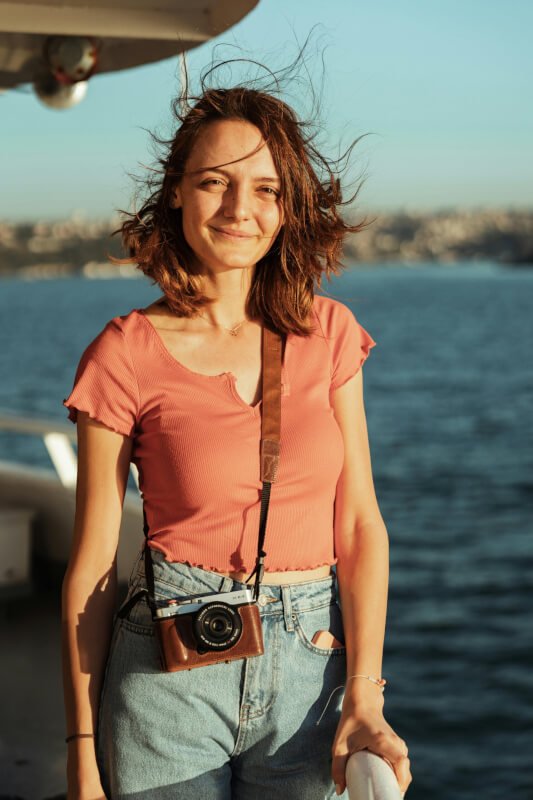
Drones with Built-in Cameras
Camera Specifications
Drones with built-in cameras often come with specific camera specifications that cater to aerial photography needs. These cameras are designed to capture high-quality images and videos from the sky. They typically have a good resolution and offer various shooting modes. Additionally, they may feature advanced settings like exposure control, white balance adjustment, and even the ability to shoot in RAW format. These camera specifications ensure that you can capture breathtaking aerial shots with precision and clarity.
Flight Stability
One of the key advantages of drones with built-in cameras is their excellent flight stability. These drones are equipped with advanced flight controls and stabilization systems that allow them to hover steadily in the air. This stability is crucial for capturing sharp and clear images and videos, as any unwanted movement or shaking can result in blurred shots. Drones with built-in cameras are designed to provide a smooth and stable flight experience, ensuring that you can focus on getting the perfect shot.
Image Quality
When it comes to aerial photography, image quality is paramount. Drones with built-in cameras are specifically designed to deliver exceptional image quality. They often feature high-resolution sensors that capture every detail of the scene, even from great heights. Additionally, these cameras may have advanced image processing capabilities that enhance the colors, contrast, and overall quality of the captured images. With a drone equipped with a built-in camera, you can expect stunning and professional-looking aerial photographs.
Drones with Removable Cameras
Interchangeable Lens Options
Drones with removable cameras offer the flexibility of switching between different lenses to achieve different perspectives and focal lengths. This allows you to customize your aerial photography experience and capture shots with varying degrees of zoom and wide-angle views. With interchangeable lens options, you can adapt to different shooting situations and capture the perfect shot, whether it’s a sweeping landscape or a close-up detail.
Camera Stability
Removable cameras on drones often come with stabilization mechanisms to minimize unwanted movements and vibrations during flight. These stabilization systems help ensure that your footage remains smooth and free from any distortions caused by the motion of the drone. Whether you’re capturing videos or still images, the camera stability provided by drones with removable cameras allows for sharp and clear results.
Image Sensor Size
The size of the image sensor in a drone camera has a direct impact on image quality. Drones with removable cameras often offer larger image sensors, which allow for better light sensitivity and improved dynamic range. Larger sensors capture more light, resulting in clearer and more detailed images, even in low-light conditions. With a drone equipped with a removable camera and a larger image sensor, you can expect professional-quality aerial photographs with stunning levels of detail.
Action Cameras for Drones
Compact Size and Weight
Action cameras are known for their compact size and lightweight design, making them a popular choice for drone enthusiasts. Their small form factor allows them to be easily mounted on drones without affecting their flight performance. The compact size and lightweight nature of action cameras also make them highly portable, enabling you to carry them along with your drone for on-the-go aerial photography.
Video Resolution and Frame Rates
One of the key features of action cameras is their ability to record high-resolution videos at various frame rates. These cameras often support ultra-high-definition (UHD) or even 4K video resolution, allowing you to capture aerial footage with exceptional clarity and detail. Additionally, action cameras offer a range of frame rate options, including slow-motion recording capabilities, which adds a creative element to your aerial photography.
Mounting Options
Action cameras are designed to be easily mountable on various surfaces, including drones. They typically come with built-in mounting brackets or compatible accessories that allow for secure attachment to the drone. This makes it effortless to set up and mount an action camera on your drone, ensuring you can start capturing stunning aerial footage in no time. The versatile mounting options offered by action cameras ensure that you can position the camera optimally for the desired shot.
Mirrorless Cameras for Drones
Size and Weight
Mirrorless cameras have gained popularity in recent years due to their compact size and lightweight construction. These cameras are significantly smaller and lighter than traditional DSLRs, making them an excellent choice for aerial photography. The compact size and reduced weight of mirrorless cameras minimize the impact on the drone’s overall weight and flight characteristics, ensuring a smooth and stable flight experience.
Image Quality and Sensor Size
Mirrorless cameras often feature large image sensors, similar to those found in DSLRs. These sensors allow for better light capture, resulting in superior image quality and low-light performance. The larger sensor size also contributes to improved dynamic range and overall image detail. With a mirrorless camera, you can expect professional-grade image quality from your aerial photography, capturing even the finest details from the sky.
Interchangeable Lens Options
One of the significant advantages of mirrorless cameras is the ability to interchange lenses. These cameras offer a wide range of lens options, including wide-angle lenses for expansive landscape shots and telephoto lenses for capturing distant subjects. The ability to switch between lenses allows for greater versatility in your aerial photography, enabling you to adapt to different shooting scenarios and achieve the desired visual effect.
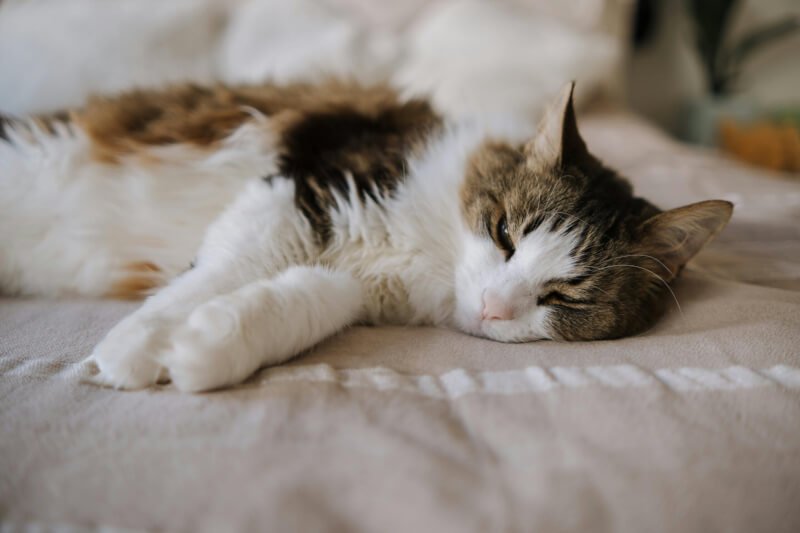
DSLR Cameras for Drones
Image Quality and Sensor Size
DSLR cameras are renowned for their exceptional image quality, owing to their larger image sensors. These sensors capture more light and detail, resulting in sharper and more vibrant images. With a DSLR camera mounted on your drone, you can capture high-resolution aerial photographs with stunning clarity and dynamic range. The superior image quality of DSLR cameras makes them a popular choice among professional aerial photographers.
Lens Options
DSLR cameras offer an extensive range of lens options, allowing you to choose the perfect lens for any aerial photography situation. From wide-angle lenses to telephoto lenses, there is a lens for every shooting scenario. The availability of different focal lengths and apertures gives you complete control over the composition and depth of field in your aerial shots. With the wide variety of lens options offered by DSLR cameras, you can capture breathtaking and highly detailed aerial photographs.
Autofocus and Shutter Speed
DSLR cameras are known for their fast autofocus capabilities and adjustable shutter speeds. These features are crucial for capturing sharp and well-exposed images, especially when shooting from a moving drone. The fast autofocus ensures that your subjects remain in focus, even if they’re in motion, while the adjustable shutter speed allows you to freeze fast-moving subjects or create motion blur effects. With the autofocus and shutter speed control of DSLR cameras, you can capture compelling and dynamic aerial photographs.
Camera Accessories for Aerial Photography
Gimbal Stabilizers
Gimbal stabilizers are essential accessories for aerial photography, as they provide smooth and stabilized footage. These devices are designed to eliminate unwanted camera movements and vibrations, resulting in steady and professional-looking shots. By using a gimbal stabilizer, you can ensure that your aerial photographs are free from any blurring or distortion caused by the drone’s movements, allowing you to capture stunningly smooth footage.
Filters for Aerial Photography
Filters are versatile accessories that can enhance the quality and creativity of aerial photographs. Neutral density (ND) filters, for example, can help reduce the amount of light entering the camera, allowing you to achieve slower shutter speeds or wider apertures in bright conditions. Polarizing filters, on the other hand, minimize glare and reflections, resulting in richer colors and increased contrast. With the use of filters, you can add depth and drama to your aerial photographs, creating visually striking images.
Wireless Transmitters
Wireless transmitters allow you to remotely control and view the live feed from your drone’s camera. These accessories provide real-time video transmission, enabling you to frame and compose your shots precisely. With a wireless transmitter, you can have a clear visual representation of what the camera sees, ensuring that you capture the perfect aerial photograph. Additionally, some wireless transmitters offer advanced features like camera settings adjustments and image playback, further enhancing your aerial photography experience.
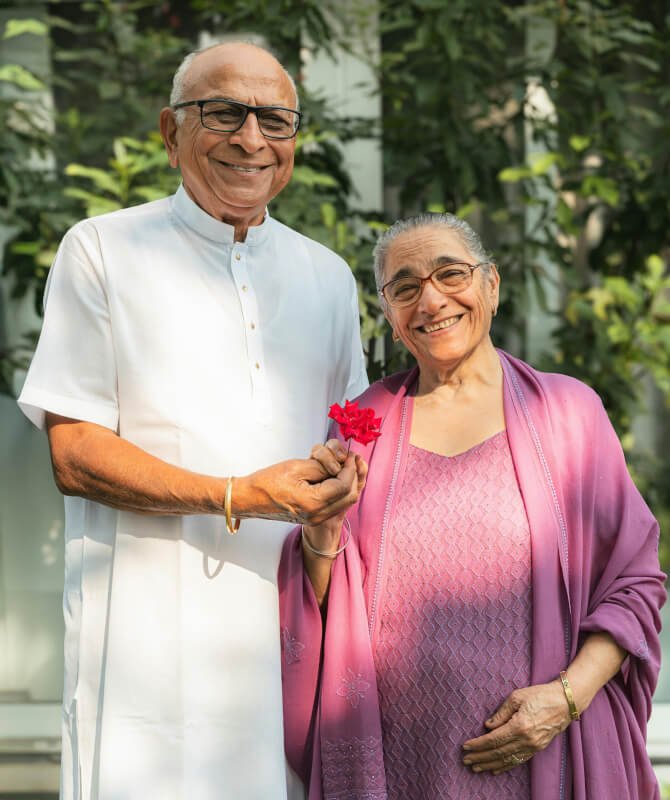
Camera Control Systems for Drones
FPV Systems
First-person view (FPV) systems allow you to experience the flight of your drone through a live video feed transmitted to a display or goggles. This immersive perspective enables you to navigate your drone more effectively and frame your shots with precision. FPV systems provide a real-time view from the drone’s perspective, giving you complete control over the camera and ensuring that you capture the desired composition.
Remote Control Interfaces
Remote control interfaces are essential for controlling your drone’s camera settings and capturing aerial photographs. These interfaces typically include joysticks or control wheels that allow for precise adjustments, such as adjusting exposure, focus, or zoom. Some remote control interfaces also offer customizable buttons or touchscreens, providing quick access to various camera functions and settings. With a user-friendly remote control interface, you can easily fine-tune your camera settings and capture the perfect aerial photographs.
Camera Settings Control
Camera settings control is crucial for achieving optimal results in aerial photography. Drones equipped with advanced camera control systems allow you to adjust settings such as exposure, white balance, and shooting modes directly from the drone’s control interface. This level of control ensures that you can adapt to different lighting conditions and shooting scenarios, resulting in well-exposed and finely tuned aerial photographs.
Image Stabilization Techniques for Aerial Photography
Mechanical Image Stabilization
Mechanical image stabilization refers to physical mechanisms used to reduce unwanted camera movements and vibrations. Drones equipped with mechanical image stabilization systems often feature built-in gimbals or stabilizers that keep the camera steady during flight. These systems use motors and gyroscopes to counteract the drone’s movements, resulting in smooth and stabilized footage. Mechanical image stabilization is highly effective in minimizing camera shake and ensuring crisp and clear aerial photographs.
Electronic Image Stabilization
Electronic image stabilization (EIS) is a digital technique that compensates for camera movements in post-processing. Drones equipped with EIS technology analyze the footage captured by the camera and make adjustments to reduce any unwanted movements. This technique is particularly useful when mechanical stabilization is not available or may not be sufficient. EIS helps improve the stability of the footage, producing smoother aerial photographs.
Software-Based Image Stabilization
Software-based image stabilization utilizes dedicated algorithms and processing techniques to reduce camera shake and vibrations. Drones equipped with software-based stabilization systems involve analyzing the captured footage and applying corrective measures to eliminate any unwanted movements. This form of stabilization can be particularly effective in situations where mechanical or electronic stabilization may not be feasible. By using software-based stabilization, you can enhance the stability of your aerial photographs and ensure professional-looking results.
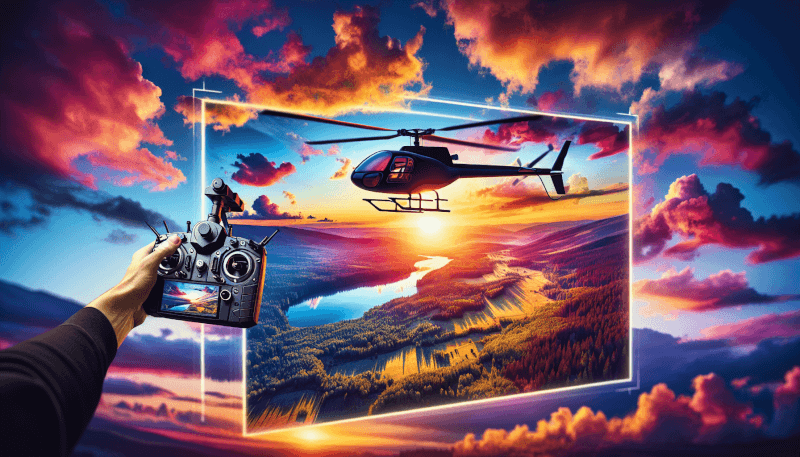
Camera Mounting Options for Drones
Fixed Mounts
Fixed mounts are the simplest and most basic camera mounting option for drones. These mounts secure the camera in a fixed position relative to the drone’s frame, ensuring a stable shot. Fixed mounts are ideal for capturing straightforward aerial photographs and videos, where the camera’s perspective remains constant throughout the flight. While fixed mounts lack the flexibility of other mounting options, they provide a solid and reliable solution for aerial photography.
Gimbal Systems
Gimbal systems offer a more advanced and versatile camera mounting option for drones. These systems utilize motors and pivot points to allow the camera to tilt and pan independently of the drone’s movements. Gimbal systems provide stability and smoothness to aerial footage, ensuring that the camera remains level and free from any unwanted vibrations. With a gimbal system, you can capture steady and well-framed aerial photographs from various angles, enhancing the overall visual quality.
4-Axis Stabilization
4-axis stabilization is a combination of mechanical and software-based stabilizations that provide a high level of stability and control to aerial photography. This system involves using a motorized gimbal along with advanced software algorithms to minimize camera movements and vibrations. 4-axis stabilization ensures that the camera is fully stabilized in all directions, providing smooth and shake-free footage. With this mounting option, you can confidently capture professional-grade aerial photographs with exceptional stability and clarity.
Best Camera Options for Professional RC Heli Aerial Photography
RED Digital Cinema Cameras
RED Digital Cinema cameras are widely recognized for their exceptional image quality and professional-grade features. These cameras offer high-resolution sensors, advanced image processing capabilities, and a wide dynamic range, making them ideal for aerial photography. With RED Digital Cinema cameras, you can capture stunning aerial photographs with uncompromised quality and detail.
Sony Alpha Series Cameras
Sony Alpha series cameras have gained popularity among professional photographers for their excellent image quality and versatility. These cameras feature high-resolution sensors, fast autofocus systems, and a wide range of lens options. The compact size and lightweight design of Sony Alpha series cameras also make them ideal for aerial photography. With a Sony Alpha camera, you can expect outstanding image quality and exceptional performance for your RC heli aerial photography.
Canon EOS-1D X Mark II
The Canon EOS-1D X Mark II is a flagship DSLR camera known for its exceptional image quality and professional-grade features. This camera offers a high-resolution sensor, fast autofocus capabilities, and a robust construction suitable for demanding aerial photography. The Canon EOS-1D X Mark II provides excellent low-light performance and is compatible with a wide range of Canon lenses, ensuring that you have the flexibility to capture any type of aerial photograph.
In conclusion, choosing the right camera for RC heli aerial photography depends on your specific needs and preferences. Drones with built-in cameras provide convenience and excellent image quality, while drones with removable cameras offer interchangeable lens options and larger image sensors. Action cameras are compact and lightweight, ideal for capturing aerial footage on the go, while mirrorless and DSLR cameras provide superior image quality and lens options for professional-grade aerial photography. Pairing your camera with the appropriate accessories and stabilization techniques further enhances your aerial photography experience. Ultimately, with the best camera options available, you can capture stunning and breathtaking aerial photographs from the sky.
